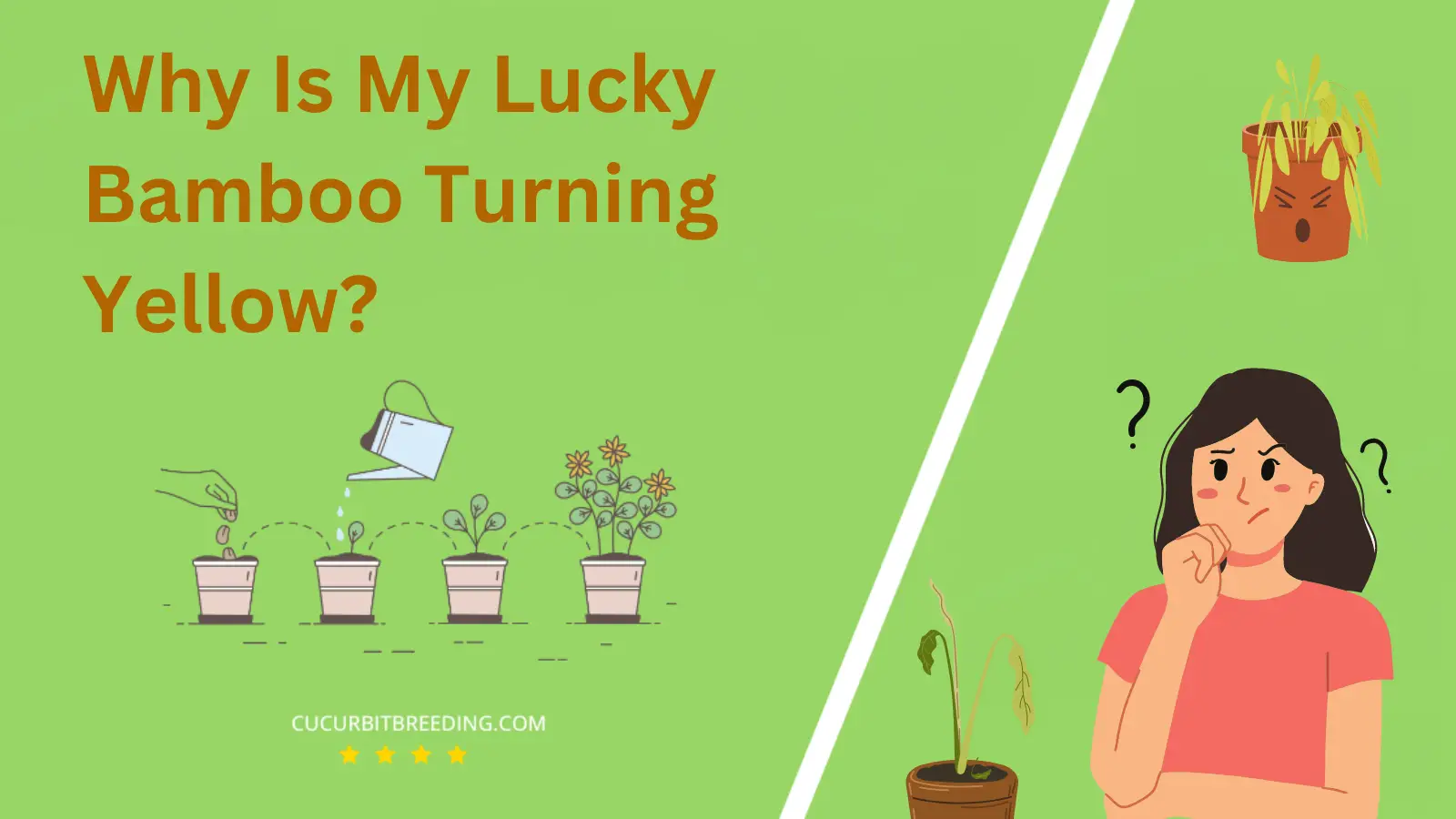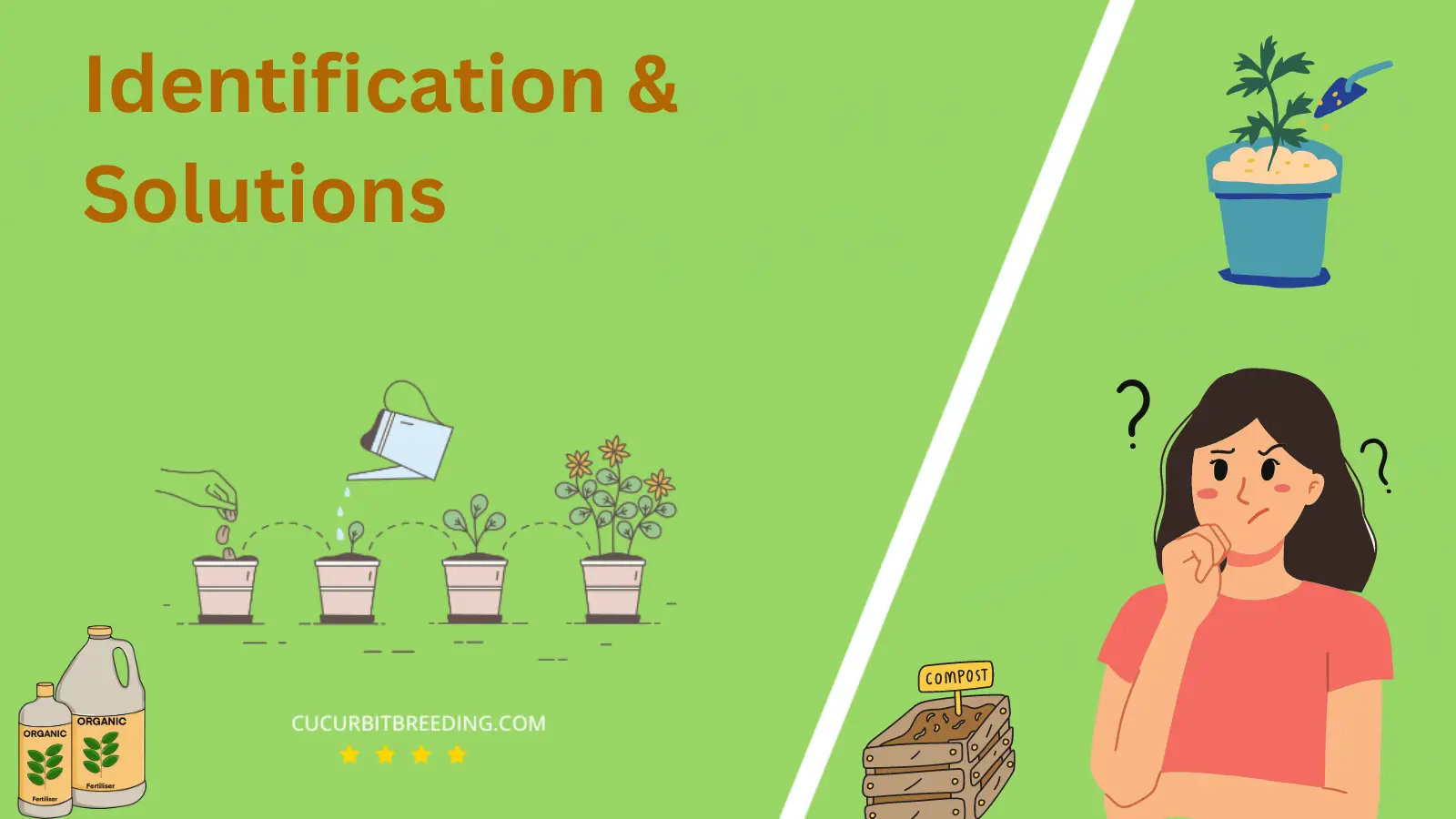
Envisioning your Lucky Bamboo turning yellow can be a disheartening sight for plant enthusiasts. Known for its thick, lustrous green shoots that symbolize fortune and well-being, Lucky Bamboo is a beloved fixture in homes and offices alike.
So, what could go wrong? Why would this beacon of positivity and growth start to lose its color? Keep reading, as we delve deeper into this leafy conundrum, and explore the underlying causes.
Why Is My Lucky Bamboo Turning Yellow?
1. Overwatering
| Description | Excessive water causes root rot, disrupting nutrient uptake and leading to yellowing of the leaves. |
|---|---|
| Solution | Reduce watering and ensure proper drainage to prevent root rot and yellowing of lucky bamboo. |
Overwatering Effects: When bamboo plants are overwatered, they are unable to take in oxygen through their roots which is essential for their growth. The waterlogged soil also promotes the growth of fungus and bacteria, which can cause root rot and subsequently a yellow tint in the leaves.
Solution: The first step in reviving an overwatered bamboo plant is to check the roots. If they are mushy or black, they are likely suffering from root rot and need to be pruned. The healthy roots should be white or light brown. Don’t remove more than one-third of the roots to prevent stressing the plant. Then, repot the plant in fresh soil or water and ensure proper drainage. Avoid overwatering in the future, remember that lucky bamboo doesn’t need a lot of water to thrive. A basic rule of thumb is to water when the top inch of the soil is dry, or for hydroponics, change the water every two to three weeks. Regular monitoring ensures that the plant is getting its specific requirements for optimum growth.
2. Underwatering
| Description | Insufficient water supply disrupts chlorophyll production, leading to yellowing of the lucky bamboo’s leaves. |
|---|---|
| Solution | Water the plant more frequently to prevent dehydration and restore its healthy green color. |
When lucky bamboo is underwatered, it can lead to the plant turning yellow. Underwatering is harmful because the bamboo plant isn’t receiving enough moisture to carry out necessary biological functions. It can cause the plant to become stressed, leading to yellowing leaves as the plant tries to conserve water.
Potential Solution:
In order to fix this issue, make sure to remember to water your lucky bamboo regularly. The amount of water required can depend on the size and age of the plant, but generally, you should keep the water level at about one inch from the bottom of the container. Make sure to use room temperature water to prevent shocking the plant. It’s important to establish a regular watering schedule, but be careful not to fall into the trap of overwatering, as this can cause other issues like root rot.
3. Lack of sunlight
| Description | The lack of sunlight causes the leaf to turn yellow in lucky bamboo. |
|---|---|
| Solution | Provide more sunlight to prevent lucky bamboo from turning yellow. |
Insufficient Sunlight Impact on Lucky Bamboo: Lucky bamboo requires adequate indirect sunlight to thrive. Lack of sunlight can cause chlorosis, a condition that results in yellowing leaves due to insufficient chlorophyll. This lack of chlorophyll means the plant isn’t photosynthesizing effectively, which is essential for its growth and health. The reduced photosynthetic activity weakens the plant, leading to yellow foliage.
Solutions for Sunlight Deprivation: Place your lucky bamboo where it can receive bright, indirect sunlight throughout the day. Exposing it to direct sunlight could burn the leaves, so it’s important the light is filtered or diffused. If you do not have a location with adequate natural light, consider an alternative light source like a grow light. This can provide the necessary wavelengths for photosynthesis, aiding the plant to recover and regain its vibrant green color. Regularly rotating the plant can also ensure all sides get evenly exposed to light.
Remember that it might take some time for the plant to recover, so patience is key. If conditions are improved, new growth should be healthy and green.
4. Excessive fertilizer
| Description | The lack of sunlight causes the leaf to turn yellow in lucky bamboo. |
|---|---|
| Solution | Provide more sunlight to prevent lucky bamboo from turning yellow. |
Over-fertilizing your lucky bamboo can lead to a condition called fertilizer burn, causing the leaves to turn yellow. This happens because the excess nutrients in the soil create a salinity level that’s too high, which can harm the plant’s roots and prevent them from absorbing water properly.
To treat this problem, slowly reduce the amount of fertilizer you’re applying. If the damage is severe, you might need to rinse the roots under lukewarm water to wash away excess nutrients. After rinsing, repot the plant in fresh soil without adding fertilizer.
Resume fertilizing only after the plant looks healthier. When you do, ensure you’re using the right amount of fertilizer, typically a diluted mix. Always follow the product’s instructions. Consider using organic fertilizers as they can be gentler on the plant.

5. Poor drainage
| Description | Provide more sunlight to prevent lucky bamboo from turning yellow. |
|---|---|
| Solution | Improve drainage to prevent yellowing of lucky bamboo. |
Lucky Bamboo plants, despite their resilience, can present yellowing symptoms when subjected to poor drainage conditions. Poor drainage restricts the evacuation of excess water, leading to waterlogged soil. This water-logged condition deprives the root system of necessary oxygen, causing the plant’s health to deteriorate and the leaves to turn yellow.
To counter this situation, you should take immediate steps to improve the drainage condition of your plant’s environment. Use a pot with drainage holes, and ensure that your container size is appropriate for the plant’s root system. Another thing to consider is the soil; opt for soil mixes that are well-draining. You can even add elements like perlite or sand to improve soil drainage. Lastly, be mindful of your watering habits. Over-watering can also lead to poor drainage and yellowing of leaves.
6. Root rot
| Description | causes lack of oxygen uptake, leading to nutrient deficiency and chlorophyll breakdown, resulting in yellowing leaves. |
|---|---|
| Solution | Prevent root rot by adjusting watering frequency and ensuring proper drainage. |
Root rot is a significant contributor when your lucky bamboo turns yellow. This is usually due to overwatering or stagnant water, which creates a damp and anaerobic environment that allows fungi and bacteria to flourish. The affected roots, unable to efficiently absorb water and nutrients, cause the plant to turn yellow.
To resolve this issue, you should immediately relocate your bamboo to a dry spot and cease watering until the soil dries out. You may also need to trim off the affected roots. Repot the plant in fresh well-draining soil and avoid overwatering in the future. Make sure your plant has proper air circulation and light to grow healthily.
7. Pests or diseases
| Description | Pests or diseases disrupt chlorophyll production, causing the leaf to turn yellow. |
|---|---|
| Solution | Apply insecticide or fungicide, as directed, to eliminate pests or diseases. |
Lucky Bamboo plants can turn yellow because of inadequate water quality. Tap water often contains chlorine, which can harm the plant. It may not show immediately, but over time, the plant can start to yellow and look unhealthy due to this. Water quality matters a lot for the longevity and health of your Lucky Bamboo plant.
To combat this problem, you should consider using filtered or distilled water instead of tap water. These types of water don’t contain the harsh chemicals and toxins often found in tap water. You can also let tap water sit in an open container overnight which would allow the chlorine to evaporate. Remember to change the water at least once a week to prevent root rot and keep your Lucky Bamboo healthy.